Highlights from 2018’s CEMS Senior Projects
Blueprint brings you snapshots from the annual presentation of CEMS Senior engineering projects. Here is a selection of the most impressive projects designed over the course of the year. Overall, 27 teams presented their designs last Saturday morning.
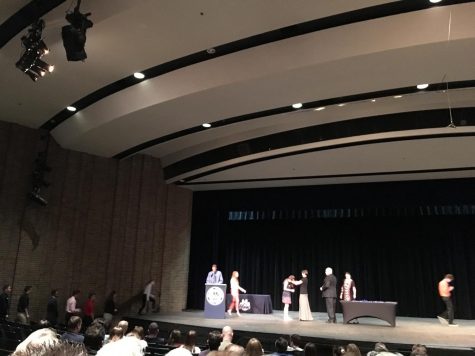

For a more intimate look at the seniors’ process to create their final prototype, click here: 2018 CEMS Research Project
Most Innovative Project
These projects promoted the most original designs, and inventive use of materials. Keep in mind, high schoolers were able to create these ideas.
Winner:

Problem: Sound Pollution from sonar in the ocean disrupts marine life such as whales who use echolocation.
Team: Dads of Engineering
Solution: The creation of a “bubble curtain” to diffuse the sound waves. They used PVC pipes with drilled holes to release air from a pump in the form of bubbles.
Honorable Mention:
Problem: Landfills decompose at an extremely slow rate. Landfill runoff, called Leachate is strongly acidic and harmful to ecosystems and drinking water.
Team: Work in Progress
Solution: They created a process to kill two birds with one stone. They would use a sump pump to draw Leachate to the top of the Landfill and sprinkle it over the surface to speed up disintegration, as it is very acidic. The rest would be pumped to a facility where it would be treated.
Honorable Mention:
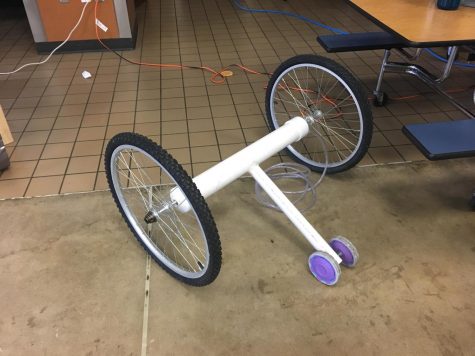
Problem: Irrigation uses water wastefully, and this issue is becoming more pertinent as freshwater aquifers are depleting.
Team: Just Add Water
Solution: Their prototype is an irrigation unit that directly delivers water to the plant, and is powered by the moving force of water which turns turbines, which turn its wheels. Read more here: Radishes Grown with Hydromechanical Irrigation
Most Useful Project
If these projects would go on the market, the world would be a better place. It may have the ability to save lives, or its everyday usage increases the quality of living.
Winner:

Problem: Food past expiration date can become too toxic to be consumed.
Team: Eat-Me-Not
Solution: This group created a unit with a sensor that detects carbon dioxide and methane gas from spoiled meat. If it is indeed expired, the box is coded to read: “DANGER.” The group was able to successfully test their product with meat from Blaine’s Cafeteria.
Honorable Mention:
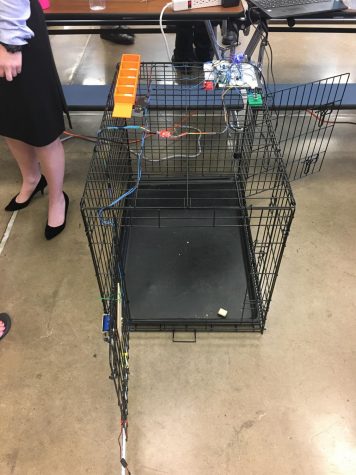
Problem: When dog owners leave town, they must make sure their dog is taken care of and let out to do its business.
Team: We Let the Dogs Out
Solution: This team programmed a dog kennel to allow a dog to be let out, and then a bell would sound to let the dog know a treat awaits in the kennel. When the dog is inside, a scale senses its weight, and the door locks.
Honorable Mention:

Problem: In Hydropower dams, the invasive species, the Zebra Mussel clogs pipes, blocking water flow, and compromising the effectiveness of the dam. Currently, dams use harmful chemicals against the Mussels.
Team: Mussel Project
Solution: They built a fine grate to cover the pipe opening with a guillotine-like blade to unlatch the mussels, simulated by clay as they were not allowed to experiment with real Zebra Mussels.
Most Unusual Project
These teams came up with an entirely unique solution with an unexpected design to address their problem.
Winner:
Problem: Slippery sidewalks from ice in winter causing people to fall and get injured.
Team: Frosty Bois
Solution: A shoe with the bottom filled with salt and a pump in the heel that shoots out salt whenever the wearer walks.
Best Use of Technology
These projects used technology in exceptionally brilliant ways in their design to solve their problem.
Winner:
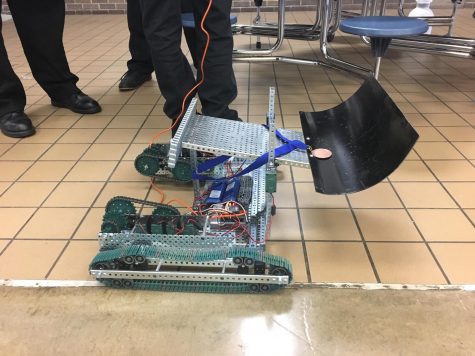
Problem: Ice dams and Snow on roofs can weigh so much that they can cause significant damage.
Team: Arctic Moths
Solution: They created two prototypes. One is a long, slender, welded aluminum shovel. Another is an impressive, remote-controlled robot with tank treads able to scale the slanted surface of a roof to shovel off snow with its plow. They compared it to a Roomba but built for a snowy roof.
Honorable Mention:
Problem: Concussions in contact sports.
Team: Masterminds
Solution: They created a system that would sense the velocity of an incoming projectile, like a soccer ball with which they tested, and alert the wearer if they were at risk for concussion. In the future, they would minimize and build it within a wearable headband for athletes.
Honorable Mention:

Problem: Creating a mouse for a computer that could be portable but not cumbersome.
Team: Of Mice and Men
Solution: A phone case that can be attached to a phone and used as a mouse, even with left and right click buttons. They used 3D printed plastic and electric mouse parts to build their model.
Most Successful Project
The teams of these projects conducted trials in order to prove the effectiveness of their design. Their projects have the potential of making a large impact on the world and environment.
Winner:
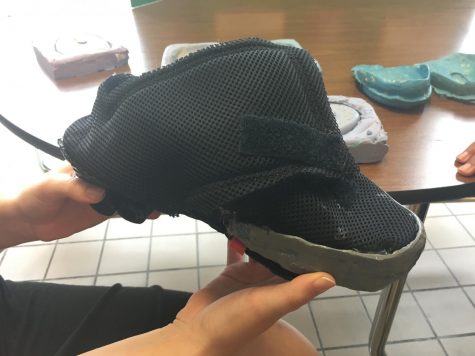
Problem: Families in developing countries can’t afford to buy shoes for their children whose feet continue growing.
Team: Feet for the Future
Solution: After many attempts, they created a shoe that, although not aesthetically pleasing, satisfies this need. It has a track that extends the length of the shoe to accommodate the increase in the size of feet.
Honorable Mention:
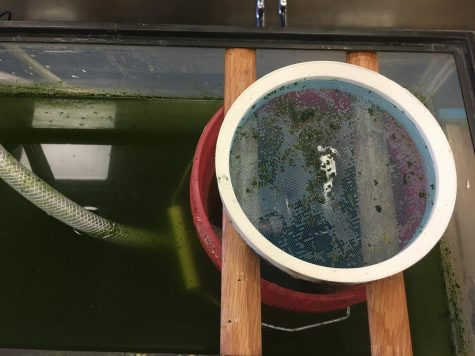
Problem: Excess Phosphorus and Nitrogen in water from runoff and fertilizer cause Algae blooms to occur. They can create “Dead Zones” in aquatic ecosystems in which nothing is able to survive.
Team: The A Brigade
Solution: A filtration system to remove Algae from the water. The team grew their own algae to test their product, and it was able to remove half of the algae, enough to restore the habitat.
Honorable Mention:
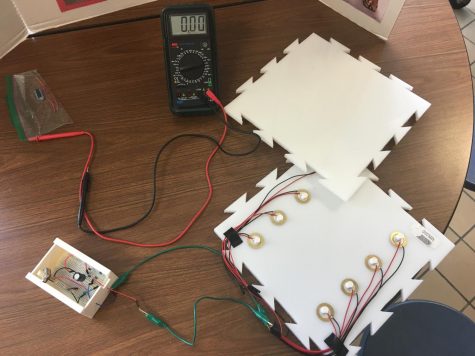
Problem: Energy inefficiency and the need for alternative energy sources.
Team: Northern Lights
Solution: The team created a way to harness the movement of pedestrians on the sidewalk to power streetlights. They hooked on piezoelectric sensors that convert the mechanical energy of footsteps into electrical energy to generate light, symbolized by the lightbulb in their circuit. In the future, they hope to expand their idea for use on roads.
Below, please comment which project(s) impressed you the most and whether you think Blueprint has accurately selected the winners.


